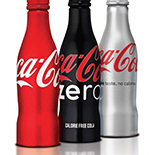Understanding The Impacts Of Water . . . And Doing Something About It

When a 12-year-old girl in the United States is thirsty, she likely goes to the kitchen and turns on the tap. And she probably does so without thinking twice about it.
But that’s not the case for children everywhere. A 12-year-old girl in Uganda, for example, may travel by foot for more than an hour to collect water, which often isn’t clean, to share with her family for drinking, personal hygiene, cooking and cleaning. Both the trek and the quality of water can be dangerous.
We are living in a water-stressed world, across both developing and developed nations, and this stress is multifaceted and omnipresent. It’s both an issue of quality and quantity, infrastructure and pricing. The stress is growing as populations grow and as more people enter the middle class and embrace more resource-intensive lifestyles.
As a global company with nearly 900 bottling plants in many diverse areas of the world,Coca-Cola is uniquely positioned to understand the impacts that water, or a lack of water, can have on nature, communities and our business. That’s why we’re committed to not only being part of the conversation, but also part of the solution. We take seriously our commitment to be a collaborative partner and a responsible steward of this precious shared resource.
Why? For starters, water is the main ingredient in the beverages we produce. It’s central to our manufacturing process, and necessary for growing the agricultural products on which we rely. We are not an export company; we produce and distribute our products locally. We’re not making cars in Detroit, or wine in California or France, and shipping around the world. The Dasani we drink each day in Atlanta, for example, was made just down the road in College Park, Ga. So when we say our business is only as healthy as the communities we serve, we truly mean it.
Through that lens, we realize the great opportunity and responsibility we have to help conserve the world’s water. Our global water stewardship strategy -- which comes to life at the local level in collaboration with our valued partners -- is working hard to do so.
With our goal to give back an amount of water equivalent to what we use in all of our products and their production by 2020, we are focused on improving our water-use efficiency,treating wastewater from our manufacturing processes, and replenishing water in communities and nature through the support of community water partnerships and healthy watersheds.
While we still have work to do, particularly in our agricultural ingredient supply chain, we’re well on our way.
Our system is becoming more efficient in its water use by reducing the amount used per liter of product, even as production volumes increase. Our system-wide water efficiency has improved for 11 straight years. We met our initial goal to improve water efficiency by 20 percent from 2004 to 2012, and we have a 2020 goal of further improving system-wide water efficiency 25 percent versus a baseline year of 2010. To date, we have improved our water use efficiency by nearly 8 percent over 2010, placing us on track toward our 2020 goal.
Coca-Cola bottling plants around the world are recycling wastewater, treating it to stringent standards and returning it to nature at a level that supports aquatic life. We are committed to doing this in all bottling plants across our system, even in the absence of local requirements or industry practice to do so.
Our global system is replenishing, or balancing, the water used in our finished beverages—an estimated 68 percent so far, with an ultimate goal of achieving full balance by 2020. We have been able to achieve this success by engaging in diverse, locally-focused community water projects that work toward objectives such as improving access to water and sanitation, and protecting watersheds. That means bringing the tap closer to home for more people, including 12-year old girls tasked with water retrieval.
Since 2005, we have engaged in more than 500 community water projects with local communities and governments in 100+ countries, as well as partners such as WWF, USAID, The Nature Conservancy, Water for People, UN-HABITAT, and the United Nations Development Programme (UNDP). These projects typically have at least one of four objectives: 1) To improve access to water and sanitation; 2) To protect watersheds; 3) To provide water for productive use; and/or 4) To educate and raise awareness about water issues, including engagement on water policy. To date, our initiatives for improving water access and sanitation alone are estimated to have benefited more than 1.9 million people.
In 2013, we renewed our long-term conservation partnership with WWF through 2020 to build on our progress and achieve even greater impact by helping address the natural resource challenges that impact fresh water. In this new phase, we are working to help ensure healthy, resilient freshwater systems in 11 key regions across five continents. We also launched our Sustainable Agriculture Guiding Principles, with specific water resource criteria, toward our 2020 goal of 100% sustainable sourcing of our key ingredients.
And just weeks ago, The Coca-Cola Africa Foundation announced plans to expand its Replenish Africa Initiative (RAIN) through 2020 to support pan-African safe water access and sanitation programs for an additional 4 million African people. This new expansion adds to TCCAF’s original RAIN commitment to bring safe water access to 2 million people across the continent by 2015.
In the coming weeks, we will release our latest 2013-2014 Sustainability Report, which will provide greater detail on our water stewardship programs, progress and priorities. We hope that when you review the report, you’ll be as proud of Coca-Cola’s work as we are.
Greg Koch is director of global water stewardship at The Coca-Cola Company.

